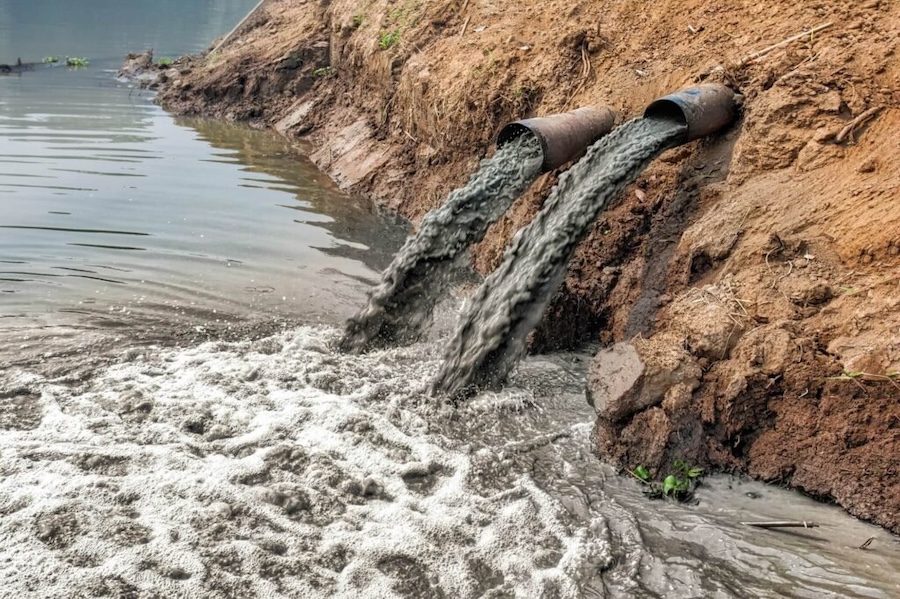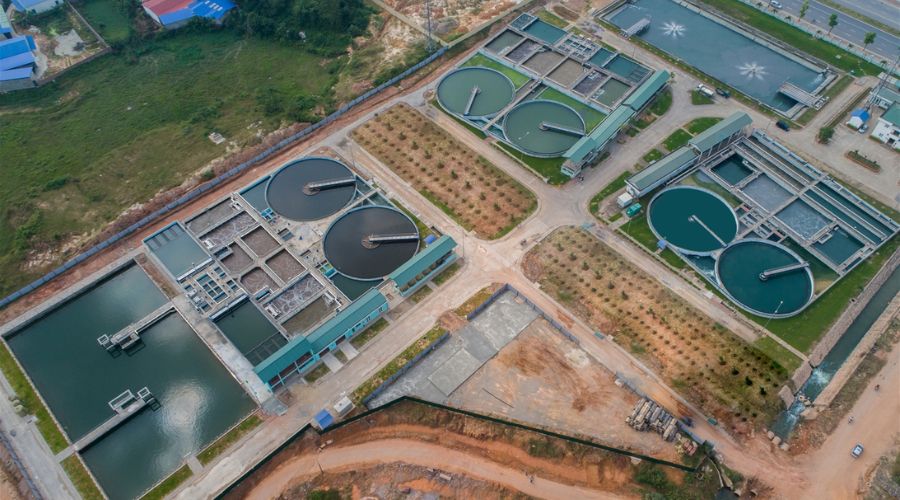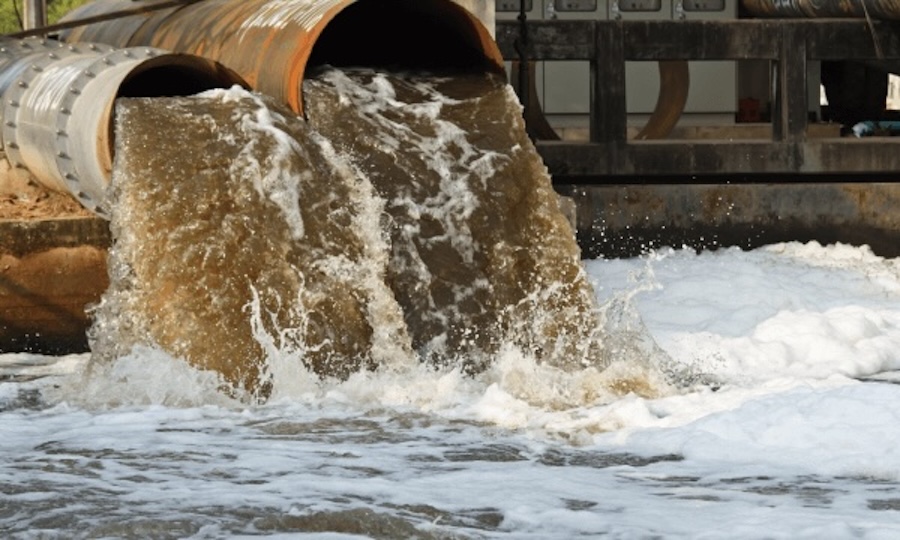During industrial production, laboratory activities, hospitals, or chemical processing, a large amount of wastewater is generated that contains high toxicity—such as heavy metals, persistent organic compounds, or dangerous pathogens. This is known as hazardous wastewater – a type of effluent that can severely impact human health and the environment if not properly managed. The following article will help you understand what hazardous wastewater is, how to identify it, categorize sources, and select appropriate treatment solutions that comply with current environmental regulations.
1. What Is Hazardous Wastewater?
According to Vietnam’s Law on Environmental Protection 2020, hazardous wastewater refers to effluents that contain highly toxic components that can endanger human health, ecosystems, and the environment if not properly treated. These hazardous components may include heavy metals (such as lead, mercury, cadmium), organic solvents, chlorinated compounds, toxic nitrogen compounds, pathogens, or flammable/explosive chemicals. This type of wastewater is classified as hazardous waste and is strictly regulated by law.
Compared to regular wastewater (from domestic or light industrial sources), hazardous wastewater is more toxic, chemically complex, and requires specialized treatment systems. For example, wastewater from electroplating contains chromium, nickel; from pharmaceuticals contains antibiotics and hormones; and from chemical plants may include phenol, formaldehyde, or persistent organics. These effluents must be collected, separated, and treated using advanced technologies to prevent secondary contamination or cross-infection.

Hazardous wastewater contains toxic components that threaten the environment.
2. Penalties for Failing to Treat Hazardous Wastewater Properly
Under the Law on Environmental Protection 2020, all individuals and organizations that generate hazardous wastewater are legally required to collect, classify, and treat it according to technical standards, and submit regular reports to the environmental authority. Discharging untreated or substandard hazardous wastewater into the environment is punishable under Decree 45/2022/NĐ-CP, which outlines administrative penalties in the environmental sector. Penalties may include monetary fines, suspension of operations, compulsory upgrades to treatment facilities, or compensation for environmental damage.
Specifically, fines can reach up to VND 1 billion (approx. USD 42,000) for organizations, or VND 500 million (approx. USD 21,000) for individuals, depending on the severity of the violation, flow volume, and environmental impact. In serious cases, criminal charges may apply. Violators must also remediate pollution, retrieve discharged waste, and submit recovery plans within the required timeframe. Thus, legal compliance is not just mandatory—but essential for reputation and long-term cost savings.
3. Key Characteristics of Hazardous Wastewater
-
Contains heavy metals (Pb, Hg, Cd, Cr...): Such wastewater often includes toxic metals like lead, mercury, cadmium, or chromium—substances that bioaccumulate in organisms and do not degrade naturally, requiring specialized treatment methods.
-
Contains toxic organic compounds, volatile or flammable: Certain wastewater streams include benzene, toluene, formaldehyde, etc. These are volatile and may release toxic gases or cause explosions if not properly contained.
-
Highly toxic to humans or the environment: Even small exposures can cause skin irritation, hormonal disruption, or damage to the nervous system and internal organs. These substances can also pollute surface and groundwater, disrupting aquatic ecosystems.
-
BOD, COD, and TSS far exceed QCVN limits: Hazardous wastewater typically has extremely high pollution indices (BOD, COD, TSS, heavy metals, ammonia), often requiring multi-step and advanced treatment technologies.
How to identify hazardous wastewater? Here are the key indicators.
4. Main Sources of Hazardous Wastewater
4.1 Chemical, Electroplating, and Metallurgical Industries
Electroplating and metallurgy facilities discharge wastewater rich in heavy metals such as Cr⁶⁺, Ni, Zn, Cu, which are highly toxic and difficult to treat using conventional methods. The chemical industry also emits volatile solvents, strong acids/bases, and flammable compounds requiring advanced physical-chemical or oxidation processes like Fenton, ozone, or adsorption.
4.2 Pharmaceuticals and Pesticide Manufacturing
Effluents from pharmaceutical production contain persistent organic compounds, hormones, antibiotics, and chemical stabilizers—many of which are resistant to biological treatment. Pesticide and agrochemical manufacturers release wastewater with chlorinated, phosphorus, or nitrogen compounds that, if not treated properly, cause serious environmental harm.
4.3 Laboratories and Hospitals
Although small in volume, these sources are hazardous due to the presence of blood, pathogens, solvents, and chemical residues. Hospital wastewater may contain drug residues, antibiotic-resistant bacteria, and disinfectants. This type of wastewater must be separated and treated under strict protocols to prevent public health risks.
4.4 Oil & Gas, Paint, Ink, and Rubber Industries
These industries produce wastewater rich in mineral oils, volatile organic compounds (VOCs), resins, dyes, and adhesives. These substances are not only toxic but also interfere with biological treatment systems. Some effluents are flammable due to residual solvents and must be handled with extreme care.
5. Common Treatment Solutions for Hazardous Wastewater
5.1 Physical-Chemical Treatment (Coagulation, Precipitation, Neutralization)
This is the first stage used to remove suspended solids, heavy metals, and toxic ions. Coagulation-flocculation gathers small particles into larger flocs that settle more easily, while chemical precipitation targets ions like Cr⁶⁺, Pb²⁺, Zn²⁺. pH neutralization is essential to stabilize the environment for subsequent treatments.
5.2 Advanced Oxidation Processes (Fenton, Ozone, UV)
AOPs are used to degrade persistent and toxic organic compounds such as pharmaceuticals, pesticides, and VOCs. Fenton combines Fe²⁺ and H₂O₂ to generate hydroxyl radicals (•OH), while ozone and UV can be used individually or synergistically. These methods are highly effective and produce minimal secondary waste when properly controlled.
5.3 Heavy Metal Removal via Ion Exchange or Adsorption
For wastewater with high concentrations of heavy metals, ion exchange resins are used to capture metal ions from solution. Adsorbents such as activated carbon, zeolite, or bio-based materials are also effective in removing metals and toxic organics. However, the adsorbents must be regenerated or replaced periodically to maintain performance and avoid secondary pollution.

Current technologies for treating hazardous wastewater effectively and safely.
Hazardous wastewater is a serious environmental threat if not treated and managed properly. From accurate identification, source separation, to the application of suitable treatment technologies—every step must follow strict protocols and legal frameworks. Enterprises or facilities discharging hazardous wastewater should partner with trusted specialists like Đại Nam Enviro, who offer full-package services from consultation to system installation, all in compliance with Vietnam’s QCVN standards.


